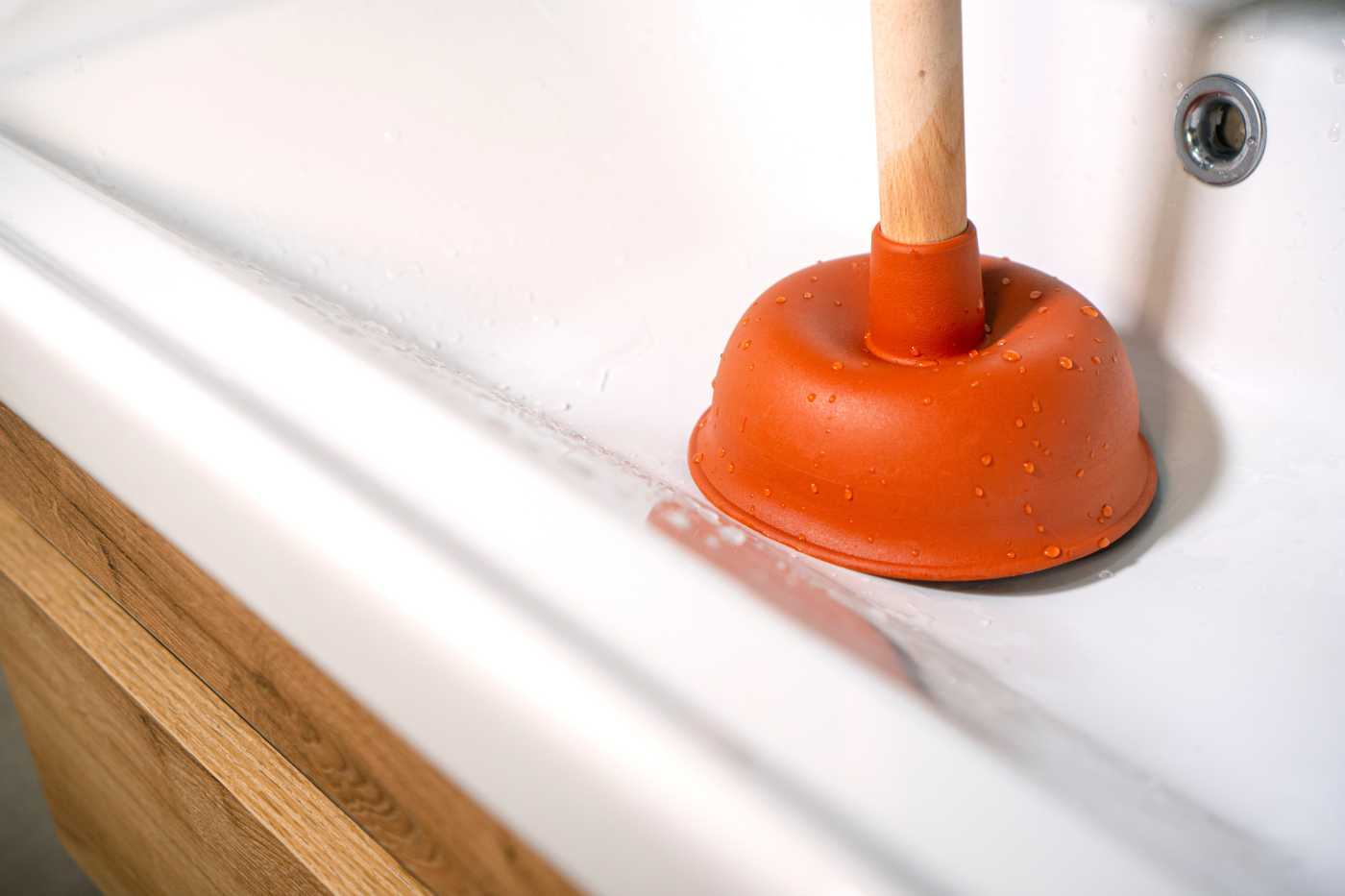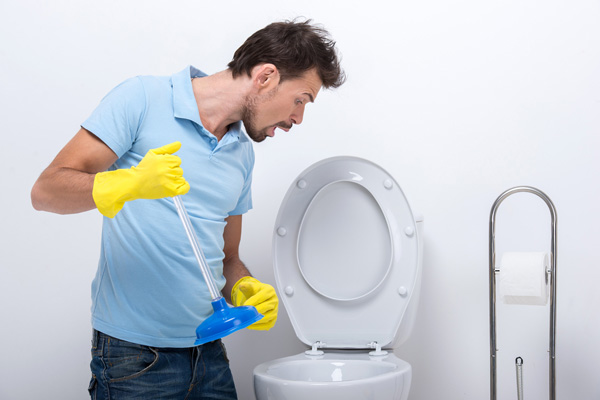How to Master Plungers and Drain Cleaner: Professional Guidance
How to Master Plungers and Drain Cleaner: Professional Guidance
Blog Article
We've unearthed this great article relating to A Guide to Plungers (and How to Use Them) below on the internet and concluded it made perfect sense to discuss it with you on this page.

Introduction
Proper maintenance of household drains is essential for preventing clogs and ensuring smooth water flow. One of the key tools in every homeowner's toolkit is the plunger, alongside various drain cleaners designed to tackle stubborn clogs effectively. This article explores how to use plungers and drain cleaners effectively to keep your drains flowing freely.
Section 1: Understanding Drain Cleaners
Types of Drain Cleaners
Drain cleaners can be chemical or enzymatic. Chemical cleaners use strong chemicals to dissolve clogs, while enzymatic cleaners use natural enzymes to break down organic matter.
How Drain Cleaners Work
Chemical cleaners react with clogs to dissolve them, while enzymatic cleaners break down organic materials like hair and grease without harming pipes.
Safety Considerations
Always wear gloves and eye protection when using chemical drain cleaners. Ensure adequate ventilation and follow manufacturer instructions carefully.
Eco-Friendly Alternatives
Consider using vinegar and baking soda or enzyme-based cleaners for eco-friendly options that are safer for pipes and the environment.
Section 2: Understanding Plungers
Types of Plungers
There are several types of plungers available, each designed for different types of drains and clogs. The most common types include cup plungers, flange plungers, and accordion plungers.
How Plungers Work
Plungers work on the principle of creating pressure and suction to dislodge clogs. When properly applied over a drain, they create a vacuum that can pull out debris or break up blockages.
Choosing the Right Plunger
Selecting the right plunger depends on the type of drain and the nature of the clog. Cup plungers are ideal for sinks and tubs, while flange plungers are better suited for toilets due to their design.
Common Mistakes with Plungers
Avoiding these mistakes ensures effective plunging: improper seal around the drain, insufficient force, and not clearing surrounding debris.
Section 3: Using Drain Cleaners Effectively
Application Techniques
Pour chemical cleaners directly into the drain opening. Allow them to work for the recommended time before flushing with hot water. Enzymatic cleaners should sit overnight.
Precautions
Avoid mixing different types of cleaners, as this can produce toxic fumes. Never use chemical cleaners in conjunction with a plunger, as splashing can occur.
Handling Stubborn Clogs
For persistent clogs, consider using a plumbing snake or calling a professional plumber to prevent damage to pipes.
Section 4: Using Plungers Effectively
Preparation
Before plunging, ensure the plunger covers the drain completely and forms a tight seal. Clear any visible debris around the drain opening.
Technique
Start with gentle plunging motions to build suction. Increase pressure gradually, using a steady rhythm. Repeat as necessary until the drain clears.
Troubleshooting Tips
If plunging doesn't work, try adjusting the seal, applying petroleum jelly for a better seal, or using a different type of plunger.
Conclusion
In conclusion, understanding how to use plungers and drain cleaners effectively is essential for maintaining healthy plumbing systems. By choosing the right tools and techniques, homeowners can tackle minor clogs and prevent major plumbing issues down the line.
HOW TO USE A PLUNGER TO UNCLOG A TOILET, SINK OR TUB
You have a bad day at work. You get stuck in traffic for hours. You have a pounding headache. And there’s nothing to eat for dinner but leftovers. How can a day this bad get worse? Easy. You flush the toilet or pull the plug on a sink or tub…and the water goes nowhere.
General Plunger Tips:
Make Sure You Use the Proper Plunger for the Job. All plungers are not created equal. There are basically two types — the cup plunger and the flange plunger. The classic cup type — probably the most familiar — is best for sinks, bathtubs and showers. The flange type has an extended rubber lip that provides a better seal for toilets.
Keep The Plunger in Good Repair. Any tears of the cup or bell (the rubber part of the plunger) will result in a poor vacuum seal and loss of pressure. Plungers should be kept clean and dry when not in use to prevent cracking or ripping.
Never Use a Plunger in Tandem with Drain Cleaning Chemicals. The plunging action will inevitably splatter dangerous chemicals onto your skin or clothing. Chemicals should only be used if a plunger fails to do the job.
Remove Excess Water. Too much water in the tub, sink or toilet will make a mess when you start plunging. Use a bucket or siphon to remove water to the half-way point. But don’t entirely remove the water; if there’s no water, the cup won’t be able to form a vacuum seal and generate any pressure. There should always be enough water to submerge the cup. If there’s not enough water, fill a bucket from another source and add.
Let Air Out of the Plunger Cup. A common mistake is to leave too much air in the plunger cup. Air, unlike water is compressible. If the cup is filled with air, it will compress every time you press down and act like a shock absorber. As a result, the clog won’t receive as much force. If the cup is filled with water, the force will be much more intense. Make sure you “burp” out the air from the cup and fill with as much water as you can before plunging.
Get a Real Tight Seal. An easy way to improve the seal around the plunger is to add some petroleum jelly to the rim of the bell or cup. This will increase the suction. It will also prevent drying and cracking.
Block All Other Outlets. If there is another sink or water fixture nearby, you’ll get better results if you block these drains before you start plunging. Get a wet cloth and stuff into these drains.
Plunge with a Vertical Up-and-Down Action. Keeping the plunger handle straight and vertical, perpendicular with the base of the toilet, tub or sink is the best way to use a plunger. If you tilt at an angle, you won’t get proper force and the plunger seal can come loose.
How To Plunge a Clogged Sink, Tub or Shower:
Use a STANDARD Cup Plunger.
Securely Cover and Seal the Overflow Drain with a Wet Rag or Cloth.
Submerge the Plunger Cup. Place the plunger over the drain and completely cover the drain opening.
Push Down With Quick, Forceful Thrusts. This will concentrate pressure down the drain toward the obstruction. Repeat for 15-20 seconds.
How To Plunge a Clogged Toilet:
Use the FLANGE type of plunger.
If the bowl is full, put on some gloves and bail out until it is only half-full. If the bowl is empty, add water until it is half-full.
Drape a towel over and around the toilet to catch any back-splash.
Place the plunger in the bowl and completely cover the drain opening.
Push Down With Quick, Forceful Thrusts. This will concentrate pressure down the drain toward the obstruction. Repeat for 15-20 seconds.
What if Plunging Fails to Unclog the Clog?
If plunging doesn’t remove the obstruction, you need to pursue more aggressive measures. While there are commercially available chemical drain cleaners and snake devices which can be quite effective at loosening the most stubborn of clogs, homeowners use these techniques at their own risk. Chemicals can burn and damage skin, clothing, pipes and surfaces. Snakes and other mechanical devices can actually compress and enlodge the obstruction more if used improperly.
Your best bet for plunger-resistant clogs is to call an experienced plumbing and drain cleaning professional who can quickly and safely remove the obstruction and get you back in the flow. Our team of emergency plumbers in Elkton, MD and other areas offer dependable drain cleaning services for homes. Our team has the tools necessary to unclog your sink, tub, or toilet. Give our team a call at 1-410-559-9527 to receive help with a clogged drain in your house.
https://www.horizonservices.com/about-us/blog/how-to-use-a-plunger-to-unclog-a-toilet-sink-or-tub/

HOW TO USE A PLUNGER TO UNCLOG A TOILET, SINK OR TUB
You have a bad day at work. You get stuck in traffic for hours. You have a pounding headache. And there’s nothing to eat for dinner but leftovers. How can a day this bad get worse? Easy. You flush the toilet or pull the plug on a sink or tub…and the water goes nowhere.
General Plunger Tips:
How To Plunge a Clogged Sink, Tub or Shower:
How To Plunge a Clogged Toilet:
What if Plunging Fails to Unclog the Clog?
If plunging doesn’t remove the obstruction, you need to pursue more aggressive measures. While there are commercially available chemical drain cleaners and snake devices which can be quite effective at loosening the most stubborn of clogs, homeowners use these techniques at their own risk. Chemicals can burn and damage skin, clothing, pipes and surfaces. Snakes and other mechanical devices can actually compress and enlodge the obstruction more if used improperly.
Your best bet for plunger-resistant clogs is to call an experienced plumbing and drain cleaning professional who can quickly and safely remove the obstruction and get you back in the flow. Our team of emergency plumbers in Elkton, MD and other areas offer dependable drain cleaning services for homes. Our team has the tools necessary to unclog your sink, tub, or toilet. Give our team a call at 1-410-559-9527 to receive help with a clogged drain in your house.
https://www.horizonservices.com/about-us/blog/how-to-use-a-plunger-to-unclog-a-toilet-sink-or-tub/
I'm very drawn to and I am assuming you liked our entry. Are you aware of somebody else who is involved in Here's How to Correctly Use a Toilet Plunger? Why not share it. I treasure your readership.
Call Today Report this page